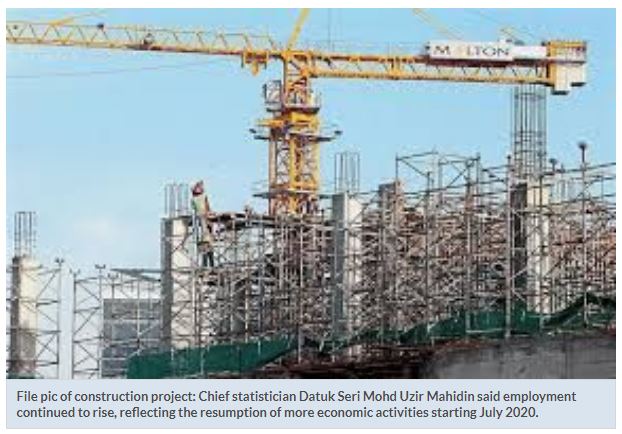Malaysia: Still a struggle for bottom 20%
KUALA LUMPUR: The top 10% of households (T10) commanded 30.7% of total income in 2019, while the income share of the bottom 20% of households (B20) was only 5.9%, according to a Khazanah Research Institute (KRI) report.
The report, titled “Welfare in Malaysia Across Three Decades, ” also noted the wide variation of savings from household income between income groups.
The top 10% of households had gross savings of RM12,653 per month on average, while the bottom 10% had only RM200 per month on average.
On a net basis, some households might have negative monthly residual income as the amount in gross term was before the deduction of obligatory payments such as social security contributions and inter-household transfers.
The report pointed out that many households remain precariously vulnerable, although the absolute poverty rate had declined to 5.6% (405,000 households) in 2019 from 7.6% in 2016. However, there has been little progress in reducing relative poverty, with an incidence of 16.9% (1.2 million households).
This meant that 11.3% (835,000 households) had incomes not far above the absolute poverty line income while remaining far below the average living standard.
These households are vulnerable to falling back into absolute poverty in case of catastrophic events such as the Covid-19 pandemic or a job loss. Also, the increase in household income has been accompanied by higher spending on eating out and communication-related goods and services.
These items, long seen as discretionary, have increasingly become necessary and put further pressure on the cost of living.
In recent years, household income growth has also slowed in tandem with the country’s slowing economic growth.
The report also noted that there was some convergence in average household incomes between ethnic groups and states over the last three decades.
However, gaps remain, as the convergence was driven by increased cash transfers and self-employment income, rather than wage growth.The long-term trend in income inequality, as measured by the Gini coefficient, also moderated from 0.442 in 1989 to 0.407 in 2019.
Bumiputra income growth has been faster than other ethnic groups, leading to smaller ethnic gaps. However, bumiputra economic activities remained less diversified and narrower than that of the non-bumiputra.
The report also pointed out the broad progress achieved in the country over three decades, with average real household income in Malaysia more than tripled from RM2,580 in 1989 to RM7,901 in 2019, while median income rose from RM1,801 to RM5,873.
Household income, as a share of gross domestic product (GDP), increased to 45.7% in 2019 from 35.9% in 1989.
The absolute poverty rate fell during the three decades from 16.5% in 1989 to 5.6% in 2019. KRI said its findings underscored the critical and urgent need to transform the Malaysian economy to elevate the collective welfare and incomes of households.
It suggested creating more high paying jobs in higher value-added activities, scaling up economic empowerment initiatives to assist low-income and vulnerable households, and increasing welfare spending and broadening the social protection system to include more vulnerable households.
KRI chairman Tan Sri Nor Mohamed Yakcop (pic) spoke about “a sense of decency” in the country and how this had reduced inequalities in society since independence in 1957.
“Based on this value, we built schools and hospitals, especially in rural areas, as well as boarding schools to enable children from the villages to emerge from poverty and join the professional class.
“We succeeded in increasing the number of bumiputra professionals from only 107 individuals in 1970 to 43,367 in 2016, ” he said in his speech before the online presentation of the KRI report to the media yesterday.
Nor Mohamed said that in addressing different forms of deprivation, the country should strive towards achieving decent rather than minimum living standards.
“For example, a single mother with two children who has to work two jobs. Her income may be higher than the poverty line, but she cannot give the best attention to her children.”
Source: https://www.thestar.com.my/business/business-news/2020/10/14/still-a-struggle-for-bottom-20


 Thailand
Thailand





